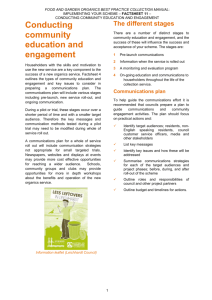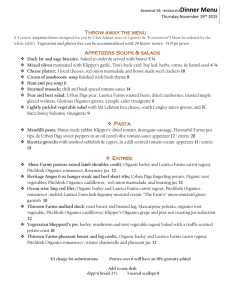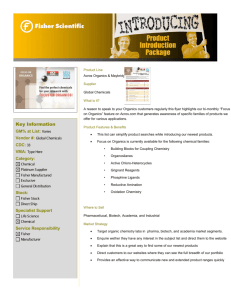Conducting monitoring and evaluation presentation
advertisement
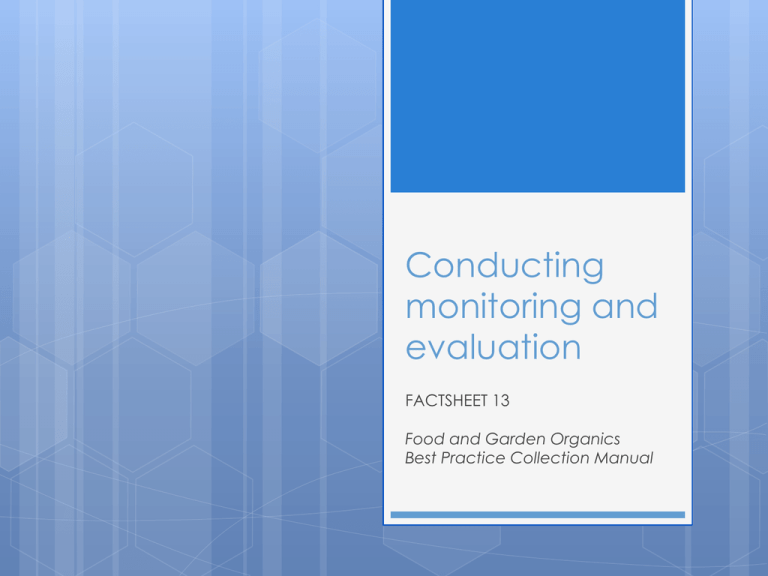
Conducting monitoring and evaluation FACTSHEET 13 Food and Garden Organics Best Practice Collection Manual Monitoring & Evaluation ‘Monitoring’ means regularly measuring outcomes such as customer satisfaction, participation rates, contamination rates and diversion rates. ‘Evaluating’ means drawing conclusions from the monitoring data in terms of how well the scheme is performing, or the effect of the communication activity. Why monitor & evaluate? Measure customer satisfaction and user attitudes to establish how these are impacting on the performance of your scheme Measure progress against objectives and targets, so you will know in advance if you are likely to hit or miss them Identify successful systems as well as problems or performance issues, so that you can target your efforts to those neighbourhoods where improvements will make the most impact Assess expenditure and control costs, in terms of anticipated quantity of organics collected, demand for liners, and the impact on education and processing costs of different contamination levels Evaluate return on investment to justify existing budgets or persuade budget holders that more money is required to achieve statutory and local targets Plan scheme expansions and design (or redesign) scheme so that targets are met or exceeded Plan targeted communications to improve performance Address the issues that are really impacting on scheme success. Monitoring methods Method 1 Tonnage data analysis, for example increased tonnage of organics and decreased residual waste tonnage 2 Waste auditing, per bin, or aggregated via a visual waste audit, or physical waste characterisation 3 Set out and participation rate monitoring, for example identifying 80% of all organics bins are put out for collection but only 50% of them contain food organics 4 Organics capture analysis How? Request data from facility operator 5 Stakeholder feedback Conduct focus groups and / or surveys (door to door, roadshows, events, public places) 6 Communication evaluation Compare baseline data and results of above methods in areas you targeted with your communications campaign Contract specialist company to undertake composition analysis Identify area, conduct visual inspection on (3 consecutive) collections, record households who have placed bin(s) out for collection. As method 2, conduct a tailored waste audit When to Monitor When to Measure How Tonnage Data 1 Pre- campaign (identify a baseline) Participation rates 1. 2 During the campaign Capture rates 1. 3 Post Campaign Set-out rates Contamination rates Sampling Sampling is required to identify a sub-set of the population from which to monitor to obtain data. The steps in sampling are as follows: Define (profile) the population of interest – decide which factors are important. Use socio-demographics. Decide how to obtain a sample that is reflective of this profile. Decide how precise the results should be – the required sample size will depend on this. For participation monitoring and questionnaire surveys, 3% precision (with a 95% confidence interval) is sufficient which means a sample size of 1,100. Sample sizes smaller than 1,100 are viable but the results become less precise as the sample size gets smaller. Design the monitoring in a way which reduces bias. Conduct the monitoring and collect the data. Weight the data to match the target population. Scheme Evaluation Evaluate and interpret monitoring data by: Looking at changes over time: establish a baseline and compare new data to identify trends Looking at differences between areas: compare results over different geographical areas and / or demographics Looking at different types of data together: use all data available to you to identify and / or understand issues Identify areas for improvement: including lessons learnt for further scheme roll-out or to share with colleagues NB: Information in this presentation is taken from the Food and Garden Organics Best Practice Collection Manual (2012) published by the Department of Sustainability, Environment, Water, Population and Communities. The full document is available on the department’s website www.environment.gov.au/wastepolicy/publications/organics-collection-manual

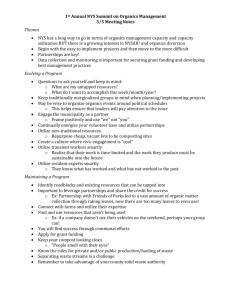
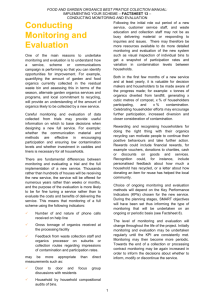
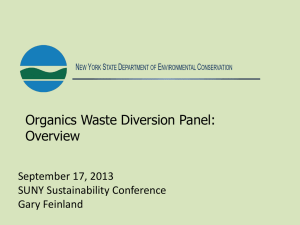
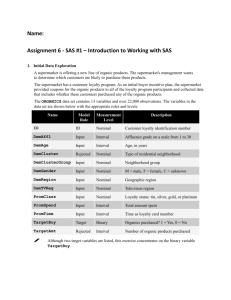
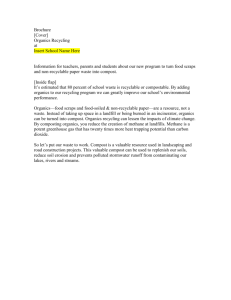
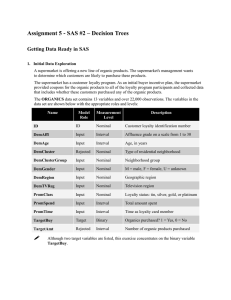
![[INSERT FUND NAME]](http://s3.studylib.net/store/data/006706039_1-f83a43e8173aa55bf9f0a3131ca0ef80-300x300.png)
